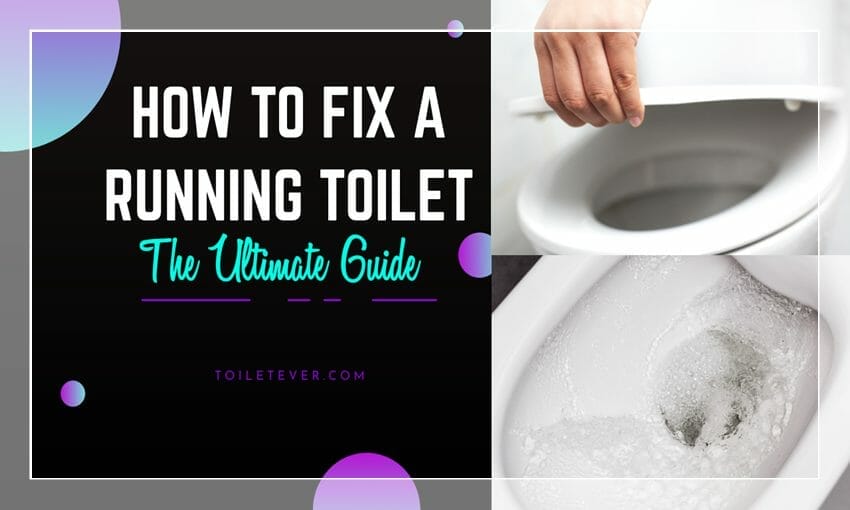
It’s a common household problem, but one that can be easily solved. In this guide, we will show you how to fix a running toilet with an easy-to-follow list of tools and instructions. When the water keeps running in your toilet bowl after you flush it (or if there is no water at all), then it means that the flapper valve or other parts need to be replaced. With our helpful tips on how to replace these parts yourself without any plumbing experience, you will have your bathroom back in order before long!
What is Running Toilet Problem?
Running toilet problem means the water keeps running in the toilet bowl after you flush it or there is no water at all. The flapper valve and other parts need to be replaced with a new one if your plumber can’t fix this problem for you.
How Can You Fix A Running Toilet?
Step by step instructions on how to replace the flapper valve to fix a running toilet will be given below.
- Turn off the water supply and make sure there is not any standing water in your toilet tank. If there is, then drain it out before you start replacing the flapper valve; this part may come with two rubber washers that need to go on either side of the bottom nut (if so, just replace them also).
- Remove both bolts from underneath where they are holding up your lid’s seat–you should use pliers to grip these tightly while turning counterclockwise because they can have some pressure behind them. You might want to find someone else who can help you lift up the heavy seat and get rid of it right away. Place over an open bucket if possible or whatever else you have available.
- Take out the old flapper valve by loosening it with a screwdriver and pulling up on it; make sure to take all of its parts (some may come apart) with you so that they can be replaced later if needed. Lay down some towels in case anything spills or leaks onto your flooring–this usually happens when water gets pushed over from the tank’s overflow tube into your toilet bowl, as well as just because of how long the previous seal was compromised. If there are any pieces left over from the old valve then go ahead and replace them now while they are handy for easy access before proceeding. Now would also be a good time to flush again after removing both bolts under where those pieces were with the screwdriver to remove any water that might have leaked back into your toilet.
- Once you’ve taken care of all those things, go ahead and replace the old valve by installing all its pieces in reverse order–make sure it is pushed down as far as possible when installed; if there are rubber gaskets then make sure they’re not reversed or upside-down so there’s a tight seal. Make sure everything is dry before proceeding and tightening up bolts with wrench or pliers for an extra snug fit (you don’t want this coming apart again). Finally, flush one more time just to check out how well it works! If necessary, repeat these steps until satisfied that both problems are fixed.
Tools List
To fix a running toilet problem, need some tools those are as below:
- Plumbing Wrench
- Screwdriver
- Small pipe wrench and/or channel locks
- Towels or rags to clean up spills
- New flapper valve (if necessary)
- Replacement rubber washers for old ones, if required.
- Electrical Tape (to wrap the threads of a new screw with, so it does not come loose again).
Conclusion
In this blog post, we’ve provided you with the ultimate guide to fixing a running toilet. If your toilet is constantly running and needs attention, check out our advice on how to fix it! We also included some additional insights about toilets in general that will help you understand these necessary fixtures better as well as provide more context for when a professional might be needed. Keep reading our blog for more information regarding this type of information as well as other plumbing tips and tricks!



